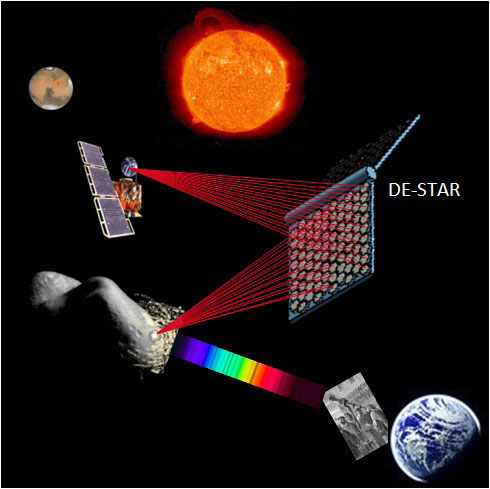 UC Santa Barbara physicist and professor Philip M. Lubin, and Gary B. Hughes conceived DE-STAR, or Directed Energy Solar Targeting of Asteroids an exploRation, as a realistic means of mitigating potential threats posed to the Earth by asteroids and comets.
UC Santa Barbara physicist and professor Philip M. Lubin, and Gary B. Hughes conceived DE-STAR, or Directed Energy Solar Targeting of Asteroids an exploRation, as a realistic means of mitigating potential threats posed to the Earth by asteroids and comets.
Feb 15th, 2013
Read more
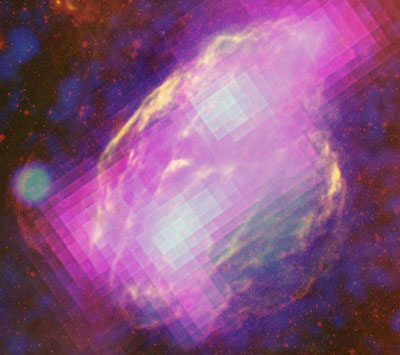 A new study using observations from NASA's Fermi Gamma-ray Space Telescope reveals the first clear-cut evidence the expanding debris of exploded stars produces some of the fastest-moving matter in the universe. This discovery is a major step toward understanding the origin of cosmic rays, one of Fermi's primary mission goals.
A new study using observations from NASA's Fermi Gamma-ray Space Telescope reveals the first clear-cut evidence the expanding debris of exploded stars produces some of the fastest-moving matter in the universe. This discovery is a major step toward understanding the origin of cosmic rays, one of Fermi's primary mission goals.
Feb 14th, 2013
Read more
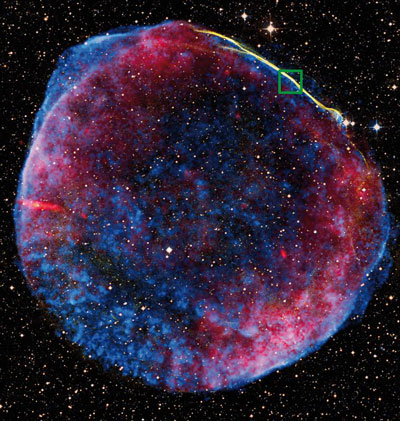 A team of astronomers has observed the supernova remnant SN 1006, probing in unprecedented detail the region where the gas ejected during the supernova meets the surrounding interstellar matter. Such remnants have long been thought to be the source of cosmic ray particles hitting Earth.
A team of astronomers has observed the supernova remnant SN 1006, probing in unprecedented detail the region where the gas ejected during the supernova meets the surrounding interstellar matter. Such remnants have long been thought to be the source of cosmic ray particles hitting Earth.
Feb 14th, 2013
Read more
Using modified laws of gravity, researchers from Case Western Reserve University and Weizmann Institute of Science closely predicted a key property measured in faint dwarf galaxies that are satellites of the nearby giant spiral galaxy Andromeda.
Feb 14th, 2013
Read more
Research by Loughborough University physicists casts new light on Saturn's moonlets - and could help solve some of the mysteries surrounding planet formation.
Feb 14th, 2013
Read more
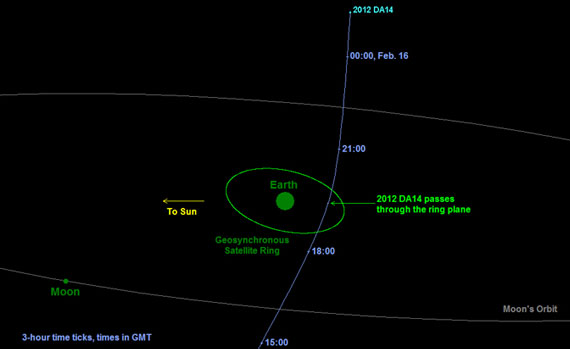 NASA Television will provide commentary starting at 11 a.m. PST (2 p.m. EST) on Friday, Feb. 15, during the close, but safe, flyby of a small near-Earth asteroid named 2012 DA14.
NASA Television will provide commentary starting at 11 a.m. PST (2 p.m. EST) on Friday, Feb. 15, during the close, but safe, flyby of a small near-Earth asteroid named 2012 DA14.
Feb 14th, 2013
Read more
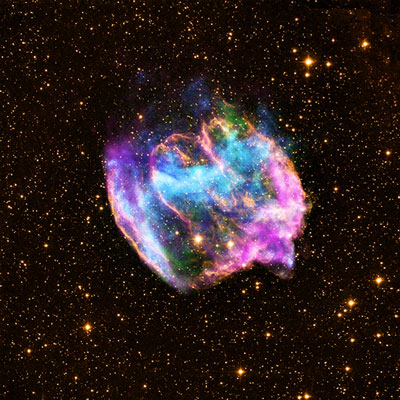 New data from NASA's Chandra X-ray Observatory suggest a highly distorted supernova remnant may contain the most recent black hole formed in the Milky Way galaxy. The remnant appears to be the product of a rare explosion in which matter is ejected at high speeds along the poles of a rotating star.
New data from NASA's Chandra X-ray Observatory suggest a highly distorted supernova remnant may contain the most recent black hole formed in the Milky Way galaxy. The remnant appears to be the product of a rare explosion in which matter is ejected at high speeds along the poles of a rotating star.
Feb 13th, 2013
Read more
Electric rocket engines known as Hall thrusters, which use a super high-velocity stream of ions to propel a spacecraft in space, have been used successfully onboard many missions for half a century. Erosion of the discharge channels walls, however, has limited their application to the inner solar system. A research team has found a way to effectively control this erosion by shaping the engine's magnetic field in a way that shields the walls from ion bombardment.
Feb 13th, 2013
Read more
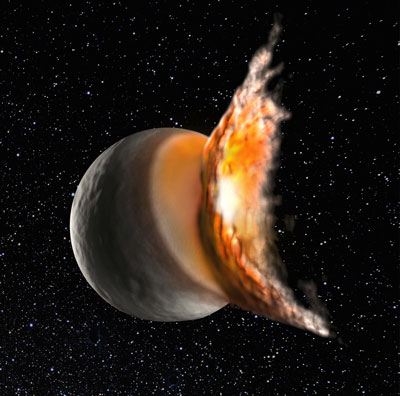 Simulations boost the significance of image and measurement data from space missions: based on the example of an asteroid, Bernese astrophysicist Martin Jutzi shows how collisions with other celestial bodies can be reconstructed and that even the internal structure of so-called protoplanets can be described. These models help to understand the development of our solar system.
Simulations boost the significance of image and measurement data from space missions: based on the example of an asteroid, Bernese astrophysicist Martin Jutzi shows how collisions with other celestial bodies can be reconstructed and that even the internal structure of so-called protoplanets can be described. These models help to understand the development of our solar system.
Feb 13th, 2013
Read more
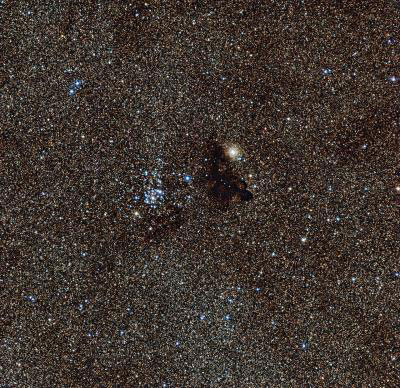 NGC 6520 is an open star cluster that contains many hot stars that glow bright blue-white, a telltale sign of their youth. Open clusters usually contain a few thousand stars that all formed at the same time, giving them all the same age. Such clusters usually only live comparatively short lives, on the order of several hundred million years, before drifting apart.
NGC 6520 is an open star cluster that contains many hot stars that glow bright blue-white, a telltale sign of their youth. Open clusters usually contain a few thousand stars that all formed at the same time, giving them all the same age. Such clusters usually only live comparatively short lives, on the order of several hundred million years, before drifting apart.
Feb 13th, 2013
Read more
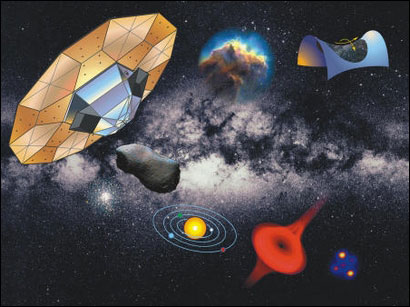 Among the hundred billion stars which can be observed in the Milky Way, there is a group of stars, the so-named ultra-cool dwarfs, defined as stars with a temperature below 2500 K, which includes ultra-cool dwarfs and brown dwarfs.
Among the hundred billion stars which can be observed in the Milky Way, there is a group of stars, the so-named ultra-cool dwarfs, defined as stars with a temperature below 2500 K, which includes ultra-cool dwarfs and brown dwarfs.
Feb 12th, 2013
Read more
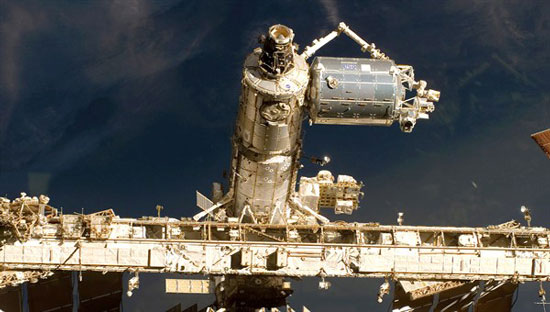 The European Columbus research module has been flying through space for five years, attached to the International Space Station (ISS).
The European Columbus research module has been flying through space for five years, attached to the International Space Station (ISS).
Feb 12th, 2013
Read more
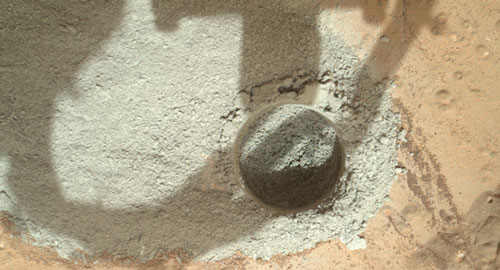 NASA's Curiosity rover has, for the first time, used a drill carried at the end of its robotic arm to bore into a flat, veiny rock on Mars and collect a sample from its interior. This is the first time any robot has drilled into a rock to collect a sample on Mars.
NASA's Curiosity rover has, for the first time, used a drill carried at the end of its robotic arm to bore into a flat, veiny rock on Mars and collect a sample from its interior. This is the first time any robot has drilled into a rock to collect a sample on Mars.
Feb 9th, 2013
Read more
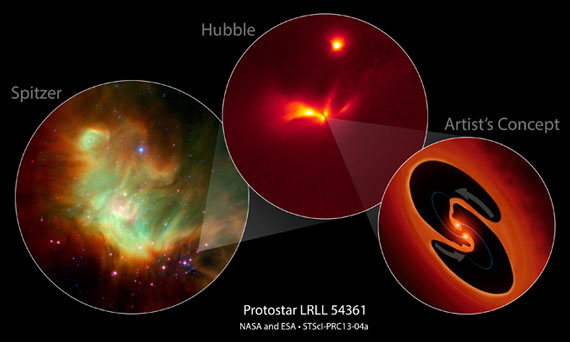 Two of NASA's great observatories, the Spitzer and Hubble space telescopes, have teamed up to uncover a mysterious infant star that behaves like a strobe light.
Two of NASA's great observatories, the Spitzer and Hubble space telescopes, have teamed up to uncover a mysterious infant star that behaves like a strobe light.
Feb 7th, 2013
Read more
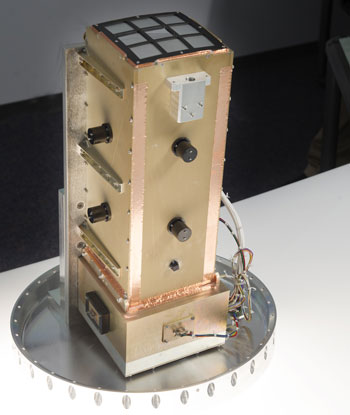 Three NASA scientists teamed up to develop and demonstrate NASA's first wide-field-of-view soft X-ray camera for studying "charge exchange," a poorly understood phenomenon that occurs when the solar wind collides with Earth's exosphere and neutral gas in interplanetary space.
Three NASA scientists teamed up to develop and demonstrate NASA's first wide-field-of-view soft X-ray camera for studying "charge exchange," a poorly understood phenomenon that occurs when the solar wind collides with Earth's exosphere and neutral gas in interplanetary space.
Feb 7th, 2013
Read more
 An automated supernova hunt is shedding new light on the death sequence of massive stars - specifically, the kind that self-destruct in Type IIn supernova explosions.
An automated supernova hunt is shedding new light on the death sequence of massive stars - specifically, the kind that self-destruct in Type IIn supernova explosions.
Feb 6th, 2013
Read more
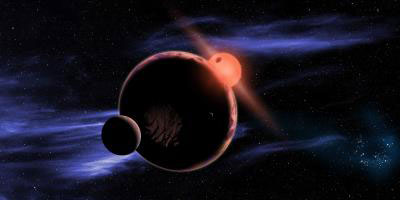 Using publicly available data from NASA's Kepler space telescope, astronomers at the Harvard-Smithsonian Center for Astrophysics (CfA) have found that six percent of red dwarf stars have habitable, Earth-sized planets. Since red dwarfs are the most common stars in our galaxy, the closest Earth-like planet could be just 13 light-years away.
Using publicly available data from NASA's Kepler space telescope, astronomers at the Harvard-Smithsonian Center for Astrophysics (CfA) have found that six percent of red dwarf stars have habitable, Earth-sized planets. Since red dwarfs are the most common stars in our galaxy, the closest Earth-like planet could be just 13 light-years away.
Feb 6th, 2013
Read more
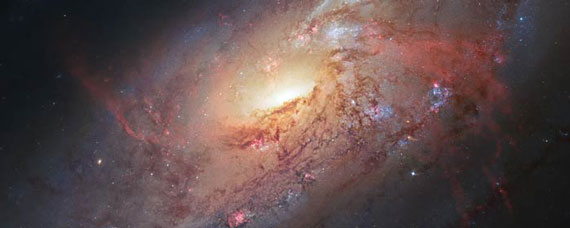 Despite its appearance, which looks much like countless other galaxies, Messier 106 hides a number of secrets. Thanks to this image, which combines data from Hubble with observations by amateur astronomers Robert Gendler and Jay GaBany, they are revealed as never before.
Despite its appearance, which looks much like countless other galaxies, Messier 106 hides a number of secrets. Thanks to this image, which combines data from Hubble with observations by amateur astronomers Robert Gendler and Jay GaBany, they are revealed as never before.
Feb 6th, 2013
Read more
 UC Santa Barbara physicist and professor Philip M. Lubin, and Gary B. Hughes conceived DE-STAR, or Directed Energy Solar Targeting of Asteroids an exploRation, as a realistic means of mitigating potential threats posed to the Earth by asteroids and comets.
UC Santa Barbara physicist and professor Philip M. Lubin, and Gary B. Hughes conceived DE-STAR, or Directed Energy Solar Targeting of Asteroids an exploRation, as a realistic means of mitigating potential threats posed to the Earth by asteroids and comets.
 Subscribe to our Space Exploration News feed
Subscribe to our Space Exploration News feed












